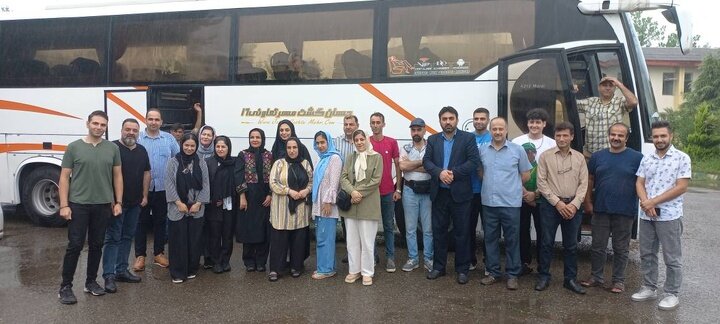Gilan targets foreign handicrafts markets

TEHRAN - In an effort to boost Gilan’s handicraft exports, a group of 25 provincial artisans have traveled to Iraq to promote their handiworks, said a local official.
“Exporting is the key solution to sales challenges in the field of handicrafts and traditional arts,” Mostafa Khanali-Nejad brought to light, emphasizing the priority of attracting foreign markets.
Following a month of coordination with the country’s Trade Promotion Organization and Iran’s commercial manager in Najaf, for the first time 25 artists and shop owners from the province have been sent to Iraq, he stated.
According to Khanali-Nejad, artisans traveled to Iraq to market and find potential customers for handicraft products, such as leather, wood carving, pottery, carpets, and woven items.
The strategic goal of this trip, he continued, is to maintain the value chain, boost exports, and increase foreign exchange earnings.
Khanali-Nejad noted that handicrafts and traditional arts are among the high-value-added professions. He explained that significant employment can be generated in this sector with minimal investment, and thus, exporting handicraft products not only brings foreign exchange but also leads to economic transformation for the artists.
He also pointed out that one of the advantages of exporting handicrafts and traditional arts is the transfer of Iran’s rich culture and customs to other countries, especially neighboring ones.
Gilan province, located in northern Iran along the Caspian Sea, is renowned for its rich cultural heritage and diverse array of handicrafts, as well as its unique geographical features, including lush forests, mountains, and coastal areas.
Gilan’s handicrafts reflect the traditions, lifestyle, and natural resources of the area, making them an integral part of the local identity and economy. Among the most notable handicrafts of Gilan are its woven textiles, particularly the “Rashti-Duzi” or Rashti embroidery. This intricate form of needlework involves colorful silk threads creating elaborate floral and geometric patterns on wool or felt. Traditionally used to decorate garments, tablecloths, and curtains, Rashti-Duzi showcases the artistry and precision of Gilani craftspeople.
Another prominent craft is “Chadorshab,” a type of traditional silk and cotton fabric known for its fine quality and vibrant designs. This textile is often used for making shawls, scarves, and other garments. The weaving techniques and patterns have been passed down through generations, preserving the cultural heritage of the region.
Woodwork is another significant handicraft in Gilan, with artisans producing a variety of items from local wood, such as furniture, kitchen utensils, and decorative objects. The craftsmanship involves traditional techniques that highlight the natural beauty of the wood and the skill of the maker.
Pottery and ceramics are also prevalent in Gilan, where artisans create functional and decorative items using locally sourced clay. The designs often reflect the natural environment and cultural motifs of the region. Additionally, Gilan’s handicrafts include basket weaving, with artisans using reeds and other natural materials to create baskets, mats, and other woven products. These items are both practical and decorative.
Overall, the handicrafts of Gilan province are a testament to the region’s rich cultural history and the creativity of its people.
XF/AM
Leave a Comment